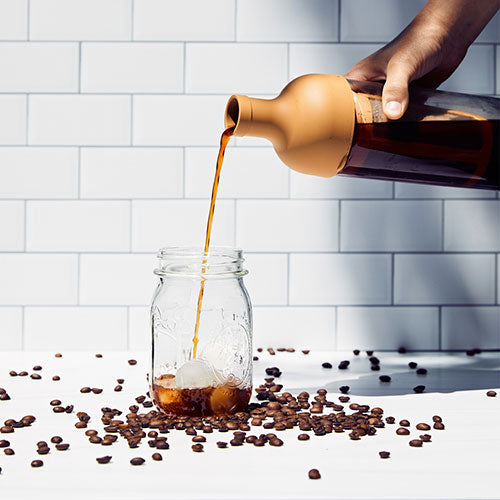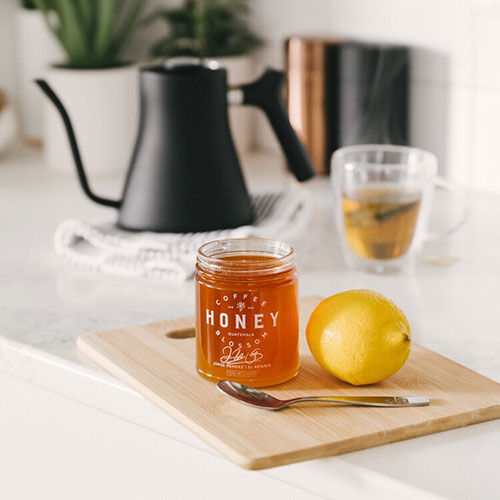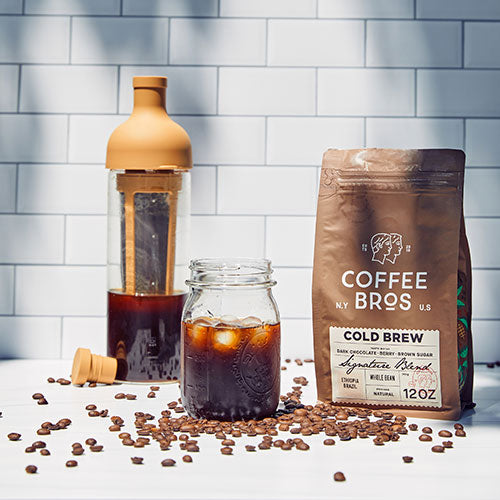Compare 100+ Espresso Machines
How to Use The Espresso Machine Comparison Tool
Use the dropdowns to select a machine of interest and compare it against
another machine you might be considering.
The first section within the widget, called “Top Features,” is those
features that most look at when purchasing and comparing espresso machines. We created
a highlight function that will highlight the elements of one espresso machine which
might be considered better. For example, suppose you are comparing a “rotary
pump” machine versus a “vibratory pump” machine. In that case, the “rotary pump”
cell will light up green as they are more consistent and quieter than the vibratory
option.
The remaining line items are grouped by espresso machine features such as,
boiler, brew group, pressure gauges and controls, pump information, build
quality, sizing information, steam features, portafilter information, water
filter, power information.
If a cell is “blank” and there is no information, it does not technically
mean that the machine is missing that feature; it just means we could not
source the information for that item. When the table says “No,” “Not
Available,” or “Or N/A,” then the machine is missing that feature.
What to look for when buying an espresso machine
Espresso Machine Type
We push users toward semi-automatic machines as they are the perfect blend of convenience and control, somewhat lacking with automatic and super-automatic machines.
Read the full breakdown here: Top 15 things to look for when buying an espresso machine
Price to Components
Carefully compare machines side-by-side to ensure you are getting the most for the price.
An espresso machine of similar price may have more desirable features than another.
Read the full breakdown here: Top 15 things to look for when buying an espresso machine
Temperature Control (PID)
You will always brew better espresso when you can alter temperatures; look for a machine with a PID controller.
Read the full breakdown here: Top 15 things to look for when buying an espresso machine
Boiler Type
Depending on your price range, heat exchangers will be the optimal single-boiler setup, while dual boilers are ideal for those without budget concerns.
Read the full breakdown here: Top 15 things to look for when buying an espresso machine
Boiler Material
Look for boilers that are stainless steel at minimum, but lean toward ones built with copper and brass components like the Rocket Espresso Machines. If you are looking at a machine with aluminum boilers, ensure they are stainless steel lined to improve corrosion resistance.
Read the full breakdown here: Top 15 things to look for when buying an espresso machine
Brew Group Type
E61 brew groups are always a great and reliable choice, but electronically heated and saturated group heads can be more efficient and versatile.
Read the full breakdown here: Top 15 things to look for when buying an espresso machine
Portafilter Size
58mm portafilters are the ideal size.
Read the full breakdown here: Top 15 things to look for when buying an espresso machine
External Material
This is purely for aesthetics, and models under $1,000 tend to have more plastic elements and brushed steel. If you find a machine that fits everything you need, don’t worry too much about the external housing.
Read the full breakdown here: Top 15 things to look for when buying an espresso machine
Internal Material
The internal build quality matters regarding the machine's longevity and the overall efficiency and consistency of all aspects of the brewing process. Look for brass and copper components if you want a machine that can withstand time.
Read the full breakdown here: Top 15 things to look for when buying an espresso machine
Pressure Profiling
If you are upgrading your machine and see yourself as a more advanced home espresso enthusiast, having the capability to control pressure and/or flow will take your espresso game to the next level.
Read the full breakdown here: Top 15 things to look for when buying an espresso machine
Parts and Servicing
Ensure the espresso machine you purchase has an adequate warranty and parts and servicing network. That beautiful one-of-a-kind espresso machine may look nice in your kitchen, but if it breaks down and you have no one to repair it, you’ll wish you went with a more common brand.
Read the full breakdown here: Top 15 things to look for when buying an espresso machine
Resell Value
Again, go with the common and desirable brands; you’ll find it quite easy to sell your machine once you are looking for an upgrade.
Read the full breakdown here: Top 15 things to look for when buying an espresso machine
Milk Steaming Capabilities
If your dream machine has it, you are pretty much set. If you are doing higher volumes at home or in a small shop, you may want to look into dedicating more research to steaming power, accessories, and no-burn insulated wands.
Read the full breakdown here: Top 15 things to look for when buying an espresso machine
Reservoir Capacity
No one wants to refill a machine every few days, but if your machine is a small-footprint single boiler machine, you might have to be okay with doing so. When looking at upgrades, some heat exchanger machines, like the Rocket Espresso line, will have upward of 98 ounces of capacity, and many dual boiler machines will offer well over 100 ounces of capacity.
Read the full breakdown here: Top 15 things to look for when buying an espresso machine
Water Filtration
Most modern espresso machines will have built-in filtration in the reservoir, so all you need to know is the type and how often to change it. If you are looking to direct plumb your espresso machine, there are a lot of great filtration options that exist outside of your machine, which is something of a larger discussion not covered here.
Read the full breakdown here: Top 15 things to look for when buying an espresso machine
Popular Espresso Machine Comparisons
Lelit Bianca V3 vs. Profitec Pro 600
Our Pick: Lelit Bianca V3
When comparing the Lelit Bianca V3 and the Profitec Pro 600 espresso machines, it's clear that both are high-end models with distinct features that cater to different preferences.
The Lelit Bianca V3 stands out with its Italian craftsmanship, combining a polished stainless steel frame with elegant walnut wood accents. Its dual boiler system, consisting of a 1.5L steam boiler and an 800mL brew boiler, ensures temperature stability and quick heat-up times. A unique feature is Lelit's patented rotating flow control paddle, which allows for precise customization of flow rates, including a low flow mode for more nuanced flow profiles. The PID with an OLED display offers further customization, including brew temperature and pre-infusion time settings. Additionally, its E61 group head and the option to use it with a water reservoir or plumbed directly add to its versatility.
On the other hand, the Profitec Pro 600 is a dual PID, dual stainless steel boiler machine known for its performance and modern aesthetics. Its flow control upgrade is a key feature, enabling users to adjust water flow during extraction, which can significantly impact coffee flavor. This feature allows for customized pre-infusion and extraction, unlocking a range of coffee nuances. The Pro 600 also maintains high steam pressure and offers independent boiler control and easy maintenance. Its design combines polished stainless steel with matte black panels, giving it a contemporary look.
In choosing between the two, a customer might prefer the Lelit Bianca V3 for its stylish Italian design, the unique rotating flow control paddle for precise flow rate adjustments, and the dual boiler system for temperature stability. It's ideal for those who appreciate both aesthetics and the ability to fine-tune their brewing process.
Conversely, the Profitec Pro 600 might be more appealing for someone looking for a blend of modern style and functionality. Its flow control feature is great for coffee aficionados wanting to experiment with different extraction profiles, and its dual PID boilers ensure consistent temperature control. It's a suitable choice for those who prioritize performance and contemporary design in their espresso machine.
Lelit Victoria vs. Profitec Go
Our Pick: Lelit Victoria
The Lelit Victoria and the Profitec Go are both single boiler espresso machines tailored for home use, but they cater to slightly different user needs and preferences.
The Lelit Victoria is designed for quick heating and ease of use, making it particularly suitable for all coffee enthusiasts, including beginners. Its standout features include an automatic pre-infusion for rich and evenly extracted shots, and an auto-flush system that cools the boiler after steaming, enhancing the machine's lifespan and performance. The Victoria's rapid heating accommodates various cup sizes, from espresso cups to larger American mugs. A key feature is the PID controller with an OLED display, allowing for precise temperature regulation for both brewing and steaming. Additionally, safety and maintenance are addressed with a fill level probe in the boiler and a three-way solenoid valve. The machine's aesthetic appeal is heightened by its brushed steel housing, metal buttons, backlit pressure gauge, and removable cup riser.
In contrast, the Profitec Go is a compact, high-quality single boiler machine, ideal for those new to specialty coffee. Its smaller .4-liter eco brass boiler heats up quickly, ready to brew within 5-7 minutes, and can switch from brew to steam in about a minute, thanks to its 1,200-watt heating element. Like the Victoria, it features a PID temperature control for precise brewing temperature adjustments. The Profitec Go's design is sleek and user-friendly, with easy-to-navigate controls and a commercial-style steam wand that simplifies milk frothing. The visible brew pressure gauge is a helpful addition for monitoring extraction quality.
When choosing between the two, a customer might prefer the Lelit Victoria for its blend of quick heating, user-friendly features, and advanced options like automatic pre-infusion and auto-flush. Its versatility in accommodating different cup sizes and the added safety features make it a solid choice for a wide range of coffee lovers, especially those seeking a balance of functionality and design.
On the other hand, the Profitec Go may appeal more to beginners in specialty coffee due to its compact design, quick heat-up time, and straightforward controls. Its smaller boiler and efficient heating element make it ideal for users who have limited space but still desire quality espresso. Its commercial-style steam wand also adds to its appeal for those who enjoy milk-based espresso drinks. Overall, the Profitec Go is well-suited for espresso enthusiasts who prioritize compact size, speed, and ease of use.
Breville Bambino Plus vs. Gaggia Classic Evo Pro
Our Pick: Breville Bambino Plus
The Breville Bambino Plus and the Gaggia Classic Evo Pro are both single-boiler espresso machines designed for home use, but they offer different features that cater to varying preferences and levels of barista experience.
The Breville Bambino Plus is designed with convenience and ease of use in mind, making it an excellent choice for those new to home espresso brewing. It stands out for its quick 3-second heat-up time and large 2-liter water reservoir, which allows for continuous use without frequent refilling. The machine comes with a comprehensive package, including pressurized dual-wall filter baskets, a tamper, dosing tool, frothing pitcher, and cleaning accessories, making it a great value for beginners. Additionally, it features pre-infusion for even extraction, automatic temperature adjustment, and a high-quality frothing wand, catering to those who value convenience and consistency in their brewing process.
On the other hand, the Gaggia Classic Evo Pro is targeted more towards new home baristas who are also seeking a machine with a more traditional espresso experience. Updated in 2023, it includes a new OPV for optimal 9-bar extractions, updated steel components, and a protective coating to prevent corrosion and scale formation in the boiler. Notable features include a 3-way solenoid valve, a 58mm commercial portafilter, and a commercial-style steam wand, adhering to specialty coffee standards. The Classic Evo Pro combines the classic design with internal improvements like a coated boiler for scale prevention, making it a durable and reliable choice.
When choosing between the two, a customer might prefer the Breville Bambino Plus for its ease of use, quick heat-up time, and comprehensive package of accessories. It's ideal for those who are just starting to explore home espresso brewing and appreciate the convenience of a machine that's ready to go with everything needed.
Conversely, the Gaggia Classic Evo Pro would likely appeal to someone who is looking for a more traditional espresso experience with the convenience of modern updates. Its adherence to specialty coffee standards, combined with its durability and classic design, make it a suitable choice for new home baristas who are serious about learning and perfecting their espresso brewing skills.




